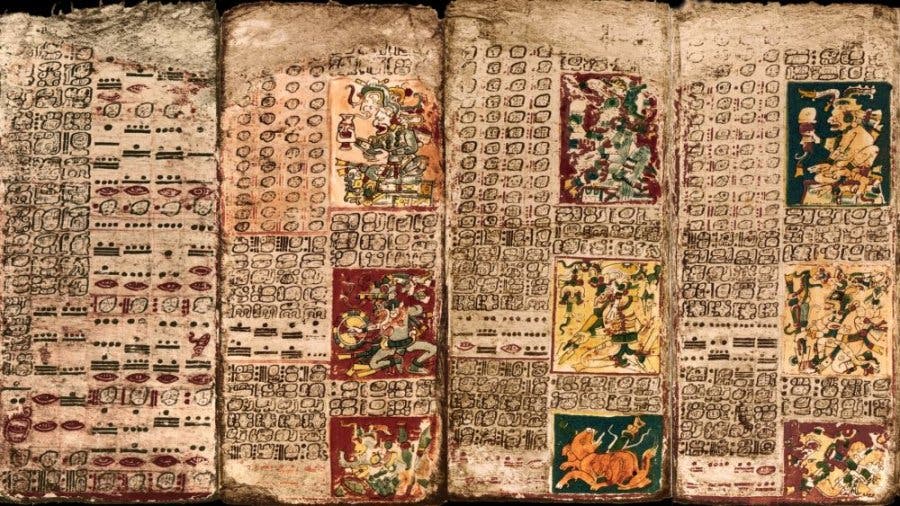Anthropologists have shown that Mayan tablets of math and astronomy have been greatly underestimated and the civilization’s astronomical knowledge may have been significantly greater than we thought.

Ever since the Venus Table of the Dresden Codex was discovered 120 years ago, scientists have appreciated its significance. The accuracy of astronomical observations, especially those regarding ‘leap years’ was impressive, and archaeologists wondered how the Mayan civilization developed such a keen sense for astronomy. But in a new article, UC Santa Barbara’s Gerardo Aldana, a professor of anthropology, found that the importance and finesse of the Venus Table may have been underestimated.
He says he “discovered a discovery”:
“That’s why I’m calling it ‘discovering discovery,’ ” he explained, “because it’s not just their discovery, it’s all the blinders that we have, that we’ve constructed and put in place that prevent us from seeing that this was their own actual scientific discovery made by Mayan people at a Mayan city.”
Using a multidisciplinary approach which blends in archaeology, astronomy, linguistics and anthropology, Aldana was able to present a new interpretation of the Venus Table, which tracks the movement of the second planet from the Sun. He uncovered a surprising mathematical precision to the astronomical observations and predictions, likely developed at the city of Chich’en Itza during the Terminal Classic period (AD 800-1000). The calculations were likely done under the patronage of K’ak’ U Pakal K’awiil, one of the city’s most prominent historical figures.
K’ak’ U Pakal K’awiil is the most widely mentioned personal name in the surviving Maya inscriptions at Chichen Itza, and also appears on monumental inscriptions at other Yucatán Peninsula sites such as Uxmal. He was likely a scientist or a scholar of the time.
“This is the part that I find to be most rewarding, that when we get in here, we’re looking at the work of an individual Mayan, and we could call him or her a scientist, an astronomer,” Aldana said. “This person, who’s witnessing events at this one city during this very specific period of time, created, through their own creativity, this mathematical innovation.”
Venus has an irregular cycle of 583.92 days. So if you construct your astronomical calendar based on that period, it’s really easy to make errors – and any error accrues year after year. Scholars figured out the math for the Venus Table’s leap in the 1930s, Aldana said, “but the question is, what does it mean? Did they discover it way back in the 1st century BC? Did they discover it in the 16th? When did they discover it and what did it mean to them? And that’s where I come in.”
Intriguingly, their calendar wasn’t based on numerology, but rather on historical observations – but we don’t know exactly why. This carries a curious resemblance to the work of Nicolaus Copernicus, a Polish astronomer who lived 500 years after the Mayan civilization. When he was trying to predict the future dates of Easter, Copernicus found that the heliocentric model (the Sun at the center of the solar system) fits in much better mathematically. That’s what Aldana noticed in the Venus Table.
“They’re using Venus not just to strictly chart when it was going to appear, but they were using it for their ritual cycles,” he explained. “They had ritual activities when the whole city would come together and they would do certain events based on the observation of Venus. And that has to have a degree of accuracy, but it doesn’t have to have overwhelming accuracy. When you change that perspective of, ‘What are you putting these cycles together for?’ that’s the [final] component.”
We don’t know exactly who made this discovery, and we may never know. It could have been a singular figure or a group of astronomers, but whoever it was – the discovery was way ahead of its time.
Journal Reference: Aldana, Gerardo. Discovering Discovery: Chich’en Itza, the Dresden Codex Venus Table and 10th Century Mayan Astronomical Innovation. Journal of Astronomy in Culture, August 2016





